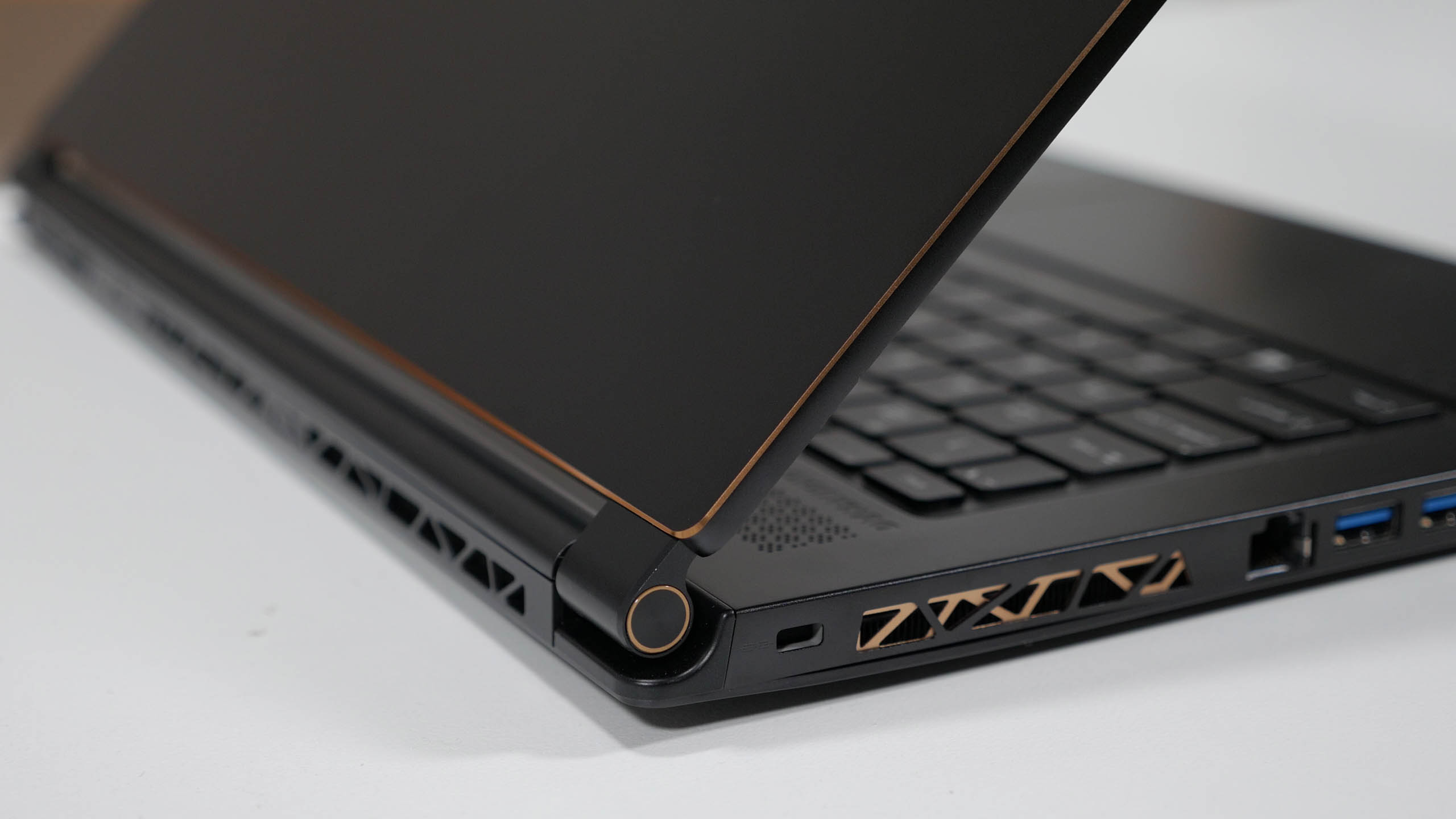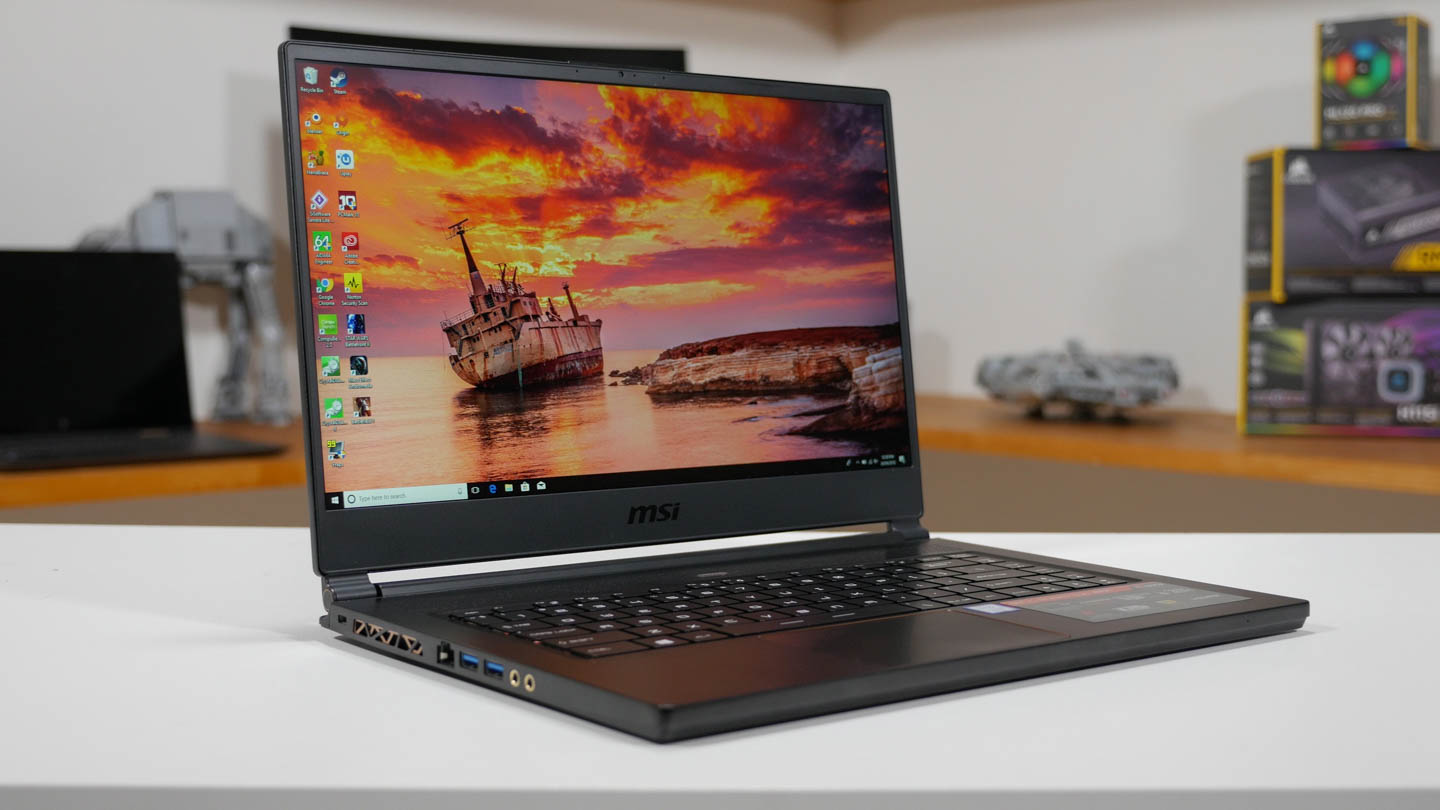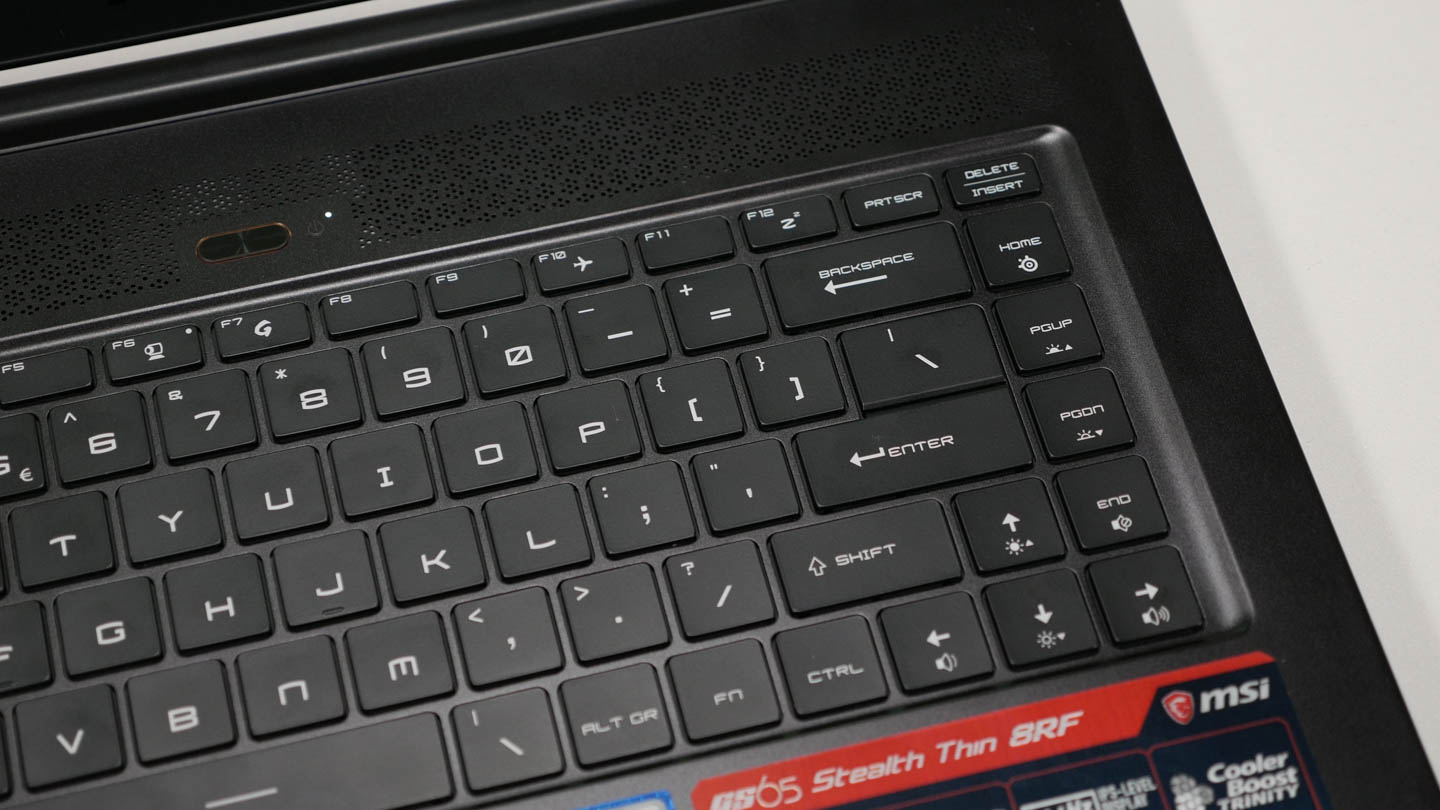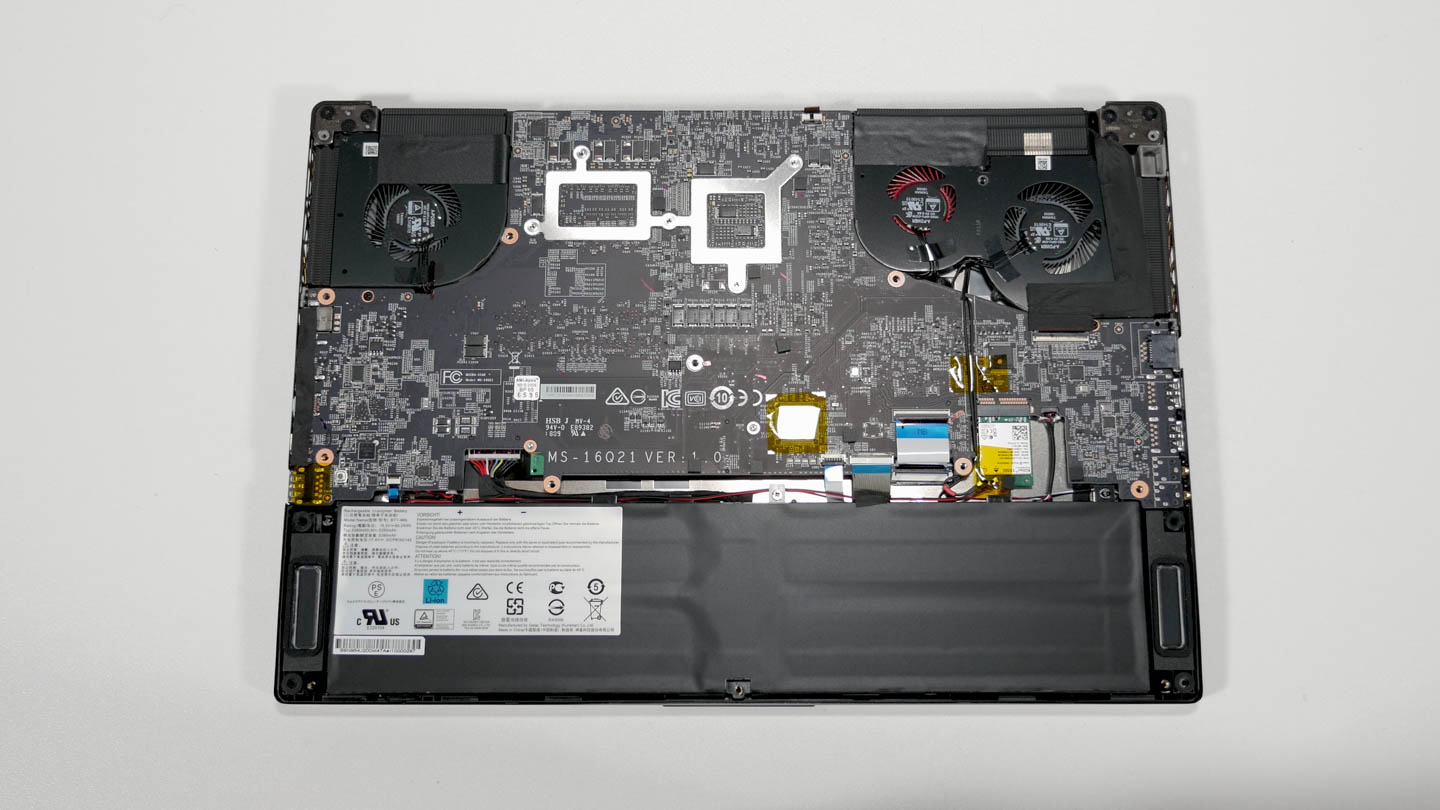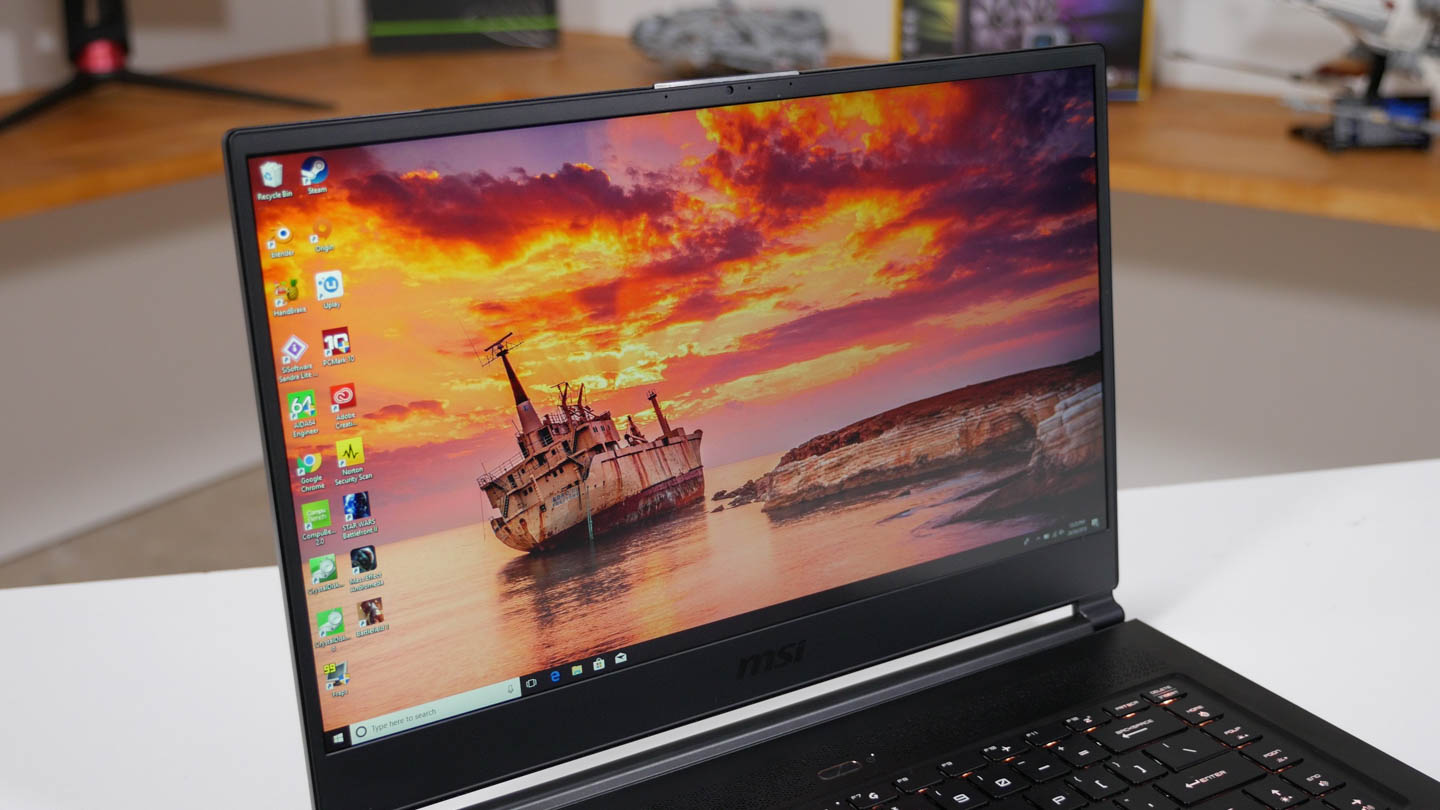MSI has joined the Coffee Lake laptop party with a brand new gaming laptop designed to take on the likes of the Razer Blade, Gigabyte Aero 15X, and Asus ROG Zephyrus. This laptop's arrival has been hotly anticipated as it brings new internal hardware along with a full refresh of MSI's gaming line build and design.
The MSI GS65 Stealth Thin is the successor to the company's previous slim gaming laptop, the GS63, which we've looked at previously. The GS63 design was in use for a couple of generations and now it's been upgraded in many areas. It still uses a 15.6-inch 1080p display, but we're now looking at slimmer bezels and an upgrade to a 144Hz refresh rate.
Hardware-wise you get typical high-end laptop internals for 2018. The CPU is Intel's Core i7-8750H that we've tested previously, and the GPU is the GeForce GTX 1070 Max-Q. There's also 16GB of RAM and a 512GB SSD in my review unit, though that combination can vary depending on the region and what you want.
MSI clearly wasn't happy with Gigabyte claiming all the accolades for its slim bezel gaming laptop, the Aero 15X, so they too have taken the slim bezel approach here. The GS65's bezels aren't quite as slim as we see with the Aero 15X, but they are much slimmer than on the GS63, and crucially MSI has achieved this without giving us a nostril-vision webcam. As you can see the top bezel is slightly thicker than the sides, and in there MSI has managed to fit in a webcam.
With slimmer bezels comes a smaller laptop, and comparing dimensions reveals the GS65 to have a slightly smaller footprint than its predecessor. About 22mm has been shaved off the width with a similar depth, all while maintaining the same 17.9mm thickness. These aren't massive reductions but every bit helps and keeps the laptop as portable as possible. Plus it's still reasonably light at just 4.1 lbs (1.88kg).
I always liked the GS63 design but this new GS65 Stealth Thin is simply a class above. It's by far the best looking MSI laptop ever, with an excellent metal shell and subtle yet attractive gold highlights around the lid, trackpad, vents and more. Almost every area of this slim chassis has been refined; it now exudes premium quality. Small touches like simplifying the logo on the lid and removing other 'gamer' elements have worked wonders, and if you remove the annoying stickers below the keyboard, the minimalist design only becomes more impressive.
The key thing with this GS65 design is despite opting for a high-quality metal chassis, MSI hasn't compromised the cooling solution. There are still a ton of vents on this system, including the sides, rear, top and bottom. We've seen with laptops like the Razer Blade that a metal design is good but it can limit the cooler quite significantly, however this doesn't appear to be the case with the GS65.
Despite a significant amount of edge space going to cooling vents, there are plenty of ports on this laptop. Three USB 3.0 Type-A ports, Thunderbolt 3 USB-C, Ethernet, HDMI 2.0, Mini-DisplayPort and two audio jacks. Unfortunately there's no SD card slot, which would have been handy for professionals, however I am glad MSI moved the position of the power button back to a more sensible location above the keyboard.
Speaking of the keyboard, MSI has used their standard SteelSeries design with per-key RGB LED backlighting. Notably, there's no numpad on the GS65, which I tend to think should come with a 15-inch laptop. The Aero 15X, for example, does manage to cram a numpad into a similar chassis. Not a big deal for gamers though, it's mostly a nitpick.
The travel distance from this keyboard is rather unimpressive. MSI has opted for an ultrabook-style switch with a shallow, rubbery response. I prefer a more clicky design and I know it's possible with a laptop keyboard, but the limited about of space MSI has allocated to the depth of these switches has no doubt constrained this keyboard's performance. On the other hand, the trackpad is very responsive and an improvement on the old ELAN days, though mostly you'll want to use a proper mouse for gaming.
Removing the bottom panel of the GS65 reveals... a flipped motherboard, unfortunately. While you can see the battery and cooling components to a small extent, any access to the RAM and M.2 slots is fairly difficult as you have to remove the entire motherboard and cooling assembly first. There are a lot of small, fragile connectors along the way, so it's not something I'd advise for the casual user. However if you do go down that path, you will find a spare M.2 slot and a spare DIMM slot.
Interestingly, MSI has used a triple-fan cooling design, with a single cooler on the left for the CPU, and a dual fan cooler for the GPU on the right. The extra fan for the GPU is a bit unique, though the heatsink design isn't anything usual and provides a good amount of finned area. Certainly a lot more than the Aero 15X.
Before heading into performance I did want to touch on the display. As I mentioned earlier it's a 1080p 144Hz display, and while it doesn't include G-Sync, I do appreciate the high refresh rate; I hope this becomes standard in gaming laptops.
Like with the bezel size, it's clear that MSI are targeting the Aero 15X with this display's calibration. While not X-Rite Pantone certified, the GS65's display is much more accurate than any MSI laptop I've reviewed in the past. It's not perfect, but an average CCT of 6804K is decent, to go along with average deltaEs of 2.2 in greyscale, 2.22 in saturation and 2.73 in ColorChecker. For the best results these figures should be below 2.0 at least, however considering past efforts this is a decent improvement.
Unfortunately, perhaps as a result of tighter calibration, brightness and contrast are unimpressive. Reaching just 248 nits of peak brightness is not great, and neither is a sub 1000:1 contrast ratio. Both of these areas are handily beaten by the Aero 15X which packs a similar display and somewhat superior calibration.
